The Pan Pacific Foundation (PPF), a non-profit organization seeking to promote a deeper understanding of Japan and its people, provides a short term homestay program to Berkeley students.
You must be at least 18 years old to apply for the program. The maximum duration is approximately 4 weeks, and participants are allowed to stay in each host family for one week. That is, you will be asked to move from one family to another every week. For further information, contact Kayoko Imagawa.
Here are comments from past participants.
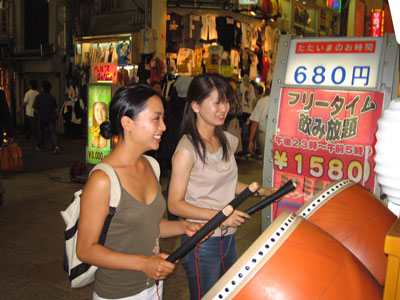 The 4-week PPF-UCB Homestay Program in July 2004 was an extremely personal experience for me. I had recently graduated from UC Berkeley with a double major in Art History and Italian Studies, but had only studied the Japanese language for one year. The language barrier was extremely difficult to overcome (it is NOT advisable for students having only Japanese 1A-B background), and because the host families were so compassionate, warm, and hospitable, the worst feeling was not being able to express all the gratitude in my heart. So to my host families, DOMO ARIGATOGOZAIMASHITA!
The 4-week PPF-UCB Homestay Program in July 2004 was an extremely personal experience for me. I had recently graduated from UC Berkeley with a double major in Art History and Italian Studies, but had only studied the Japanese language for one year. The language barrier was extremely difficult to overcome (it is NOT advisable for students having only Japanese 1A-B background), and because the host families were so compassionate, warm, and hospitable, the worst feeling was not being able to express all the gratitude in my heart. So to my host families, DOMO ARIGATOGOZAIMASHITA!
My first host family, the Ooigawas, were extremely accomplished, and, fortunately for me, spoke incredible English. The most incredible thing was that I looked very much like their eight-year-old daughter Yui-chan, and when we all went around Tokyo together, people would think we were just one family! I couldn't decide if that was a good thing or not, because it made it very difficult for people to realize I was really a foreigner and understood very little Japanese! The Ooigawas had me try some of the most delicious or interesting Japanese cuisine ever: monja (cook-it-yourself food on a metal grill), takoyaki (octopus balls), izakaya in Roppongi (yakitori in a traditional Japanese setting), order-home pizza with mayonnaise and curry toppings. Yes, very weird.
The second host family, the Obinatas, in Azusabashi (outside Matsumoto) were very lively and helped improve my Japanese a great deal. It was such a shock to discover that your host parents spoke Spanish and could prepare delicious paella complete with Spanish wine. So we ended up speaking a very interesting mix of English/Spanish/Japanese! I'm sure the grandma, who only understood Japanese, found it very amusing. The Obinatas also helped me dress up in a yukata (a summer kimono) and even gave one to me as an omiyage.

Fortunately, with the third family in Kyoto, we developed a new system of communication: we just found it easier at write kanji to each other since I am Chinese. The Okumura couple were young, and it felt more like I was spending time with an older sister then staying with a family. It was really fun to play taiko (Japanese drums) in an Osaka arcade and take pulicula (sticker pictures). They were also able to take a road trip with me to Himeji, and it really was an art historian's dream come true. Toward the end of the homestay, I had unfortunately gotten a fever because of the typhoon season; however, it was also helped me discover hiya pita (a cooling medicated patch that sticks to the forehead) and miso soup with karashi, which the Okumuras thought was the weirdest thing in the world.
The PPF-UCB Homestay has offered me not only lasting friendships with these three families, but also a profound understanding of my own family, which had been heavily influenced under Japanese culture in Taiwan. I now understand why my grandmother always put on makeup to go out in public and said, "yoishyo" when going down the stairs, or why my mother is so extremely punctual. The PPF experience is invaluable, and I encourage anyone who has the opportunity to take part in this program to do so.
Watashiwa nihongo wo motto benkyou shiyouto chikaimashita!
I found out about the Pan Pacific Foundation Homestay Program through my Japanese instructors and thought that the program matched my objectives of visiting Japan more than the EAP (study abroad) program that I was thinking about applying to. I studied Japanese as a foreign language for two years in high school and two years in college, but never had the opportunity to visit the country and experience it’s culture at all. I realized that there is only so much I can understand about Japan through textbooks and the media. The major goal I wanted to achieve if I went to Japan wasn’t just to sightsee, but I wanted to meet people and become immersed into daily life in Japan. Fortunately, in the summer of 2010 I was given the opportunity to participate in this program after applying for it in the spring semester of my sophomore year at Berkeley. Through this program, I was able to go to Japan for the first time, visit various places, experience Japanese culture directly, and meet many wonderful people who I hope to continue to keep in touch with.
In a short span of 14 days, (June 25~ July 9, 2010) I got to meet and live with three different Japanese families. Initially, I applied to go to Nagoya and Fukuoka, but in the end Nagoya didn’t work out so I went to Osaka instead. My first stop was at Kishiwada, Osaka with the Kawais (who are really kawaii). They are a family of four, Mr. and Mrs. Kawai and their children Yuuki and Yoshikazu. They lived only five minutes away from a train station, so while the kids were at school and Mr. and Mrs. Kawai were at work, it was very convenient to take the train to visit different places in Osaka, such as Namba, Umeda, and Osaka Castle. Though I really enjoyed visiting these places, the highlight of my day was always dinner at 8. Mrs. Kawai would always prepare delicious Japanese food such as soumen, okonomiyaki, and temaki sushi. Aside from the food, we would watch Japanese TV shows or talk about anything and everything. Sometimes I struggled to understand what they were saying since they were speaking quickly and often used Osaka dialect, but they would always explain to me slowly when they saw my confused face. Our Japanese-English dictionaries also helped a lot. By the end of my stay, I even learned some Osaka dialect.
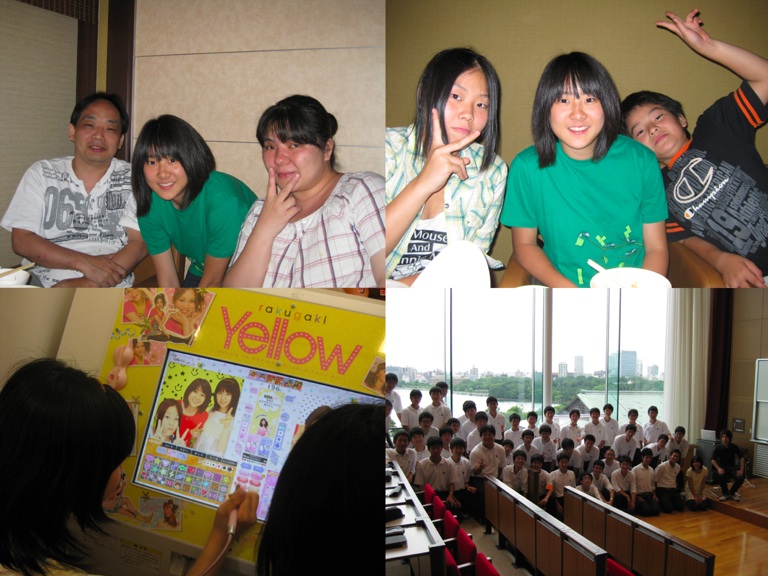
Another day, I got to hang out with Yuuki, her friend Miku, and Miku’s mom who volunteered to drive us around even though it was her birthday. We visited various places in Wakayama, Kishiwada’s neighboring city where Miku lived. Coincidently, the two girls will be visiting America in August, so I hope that I’ll be able to meet them then. On my last day with the Kawais, Mr. and Mrs. Kawai took me to Nara to visit Kasuga Shrine, The Great Buddha Hall, and the 1300th Anniversary of Nara Heijyo-kyo Capital. At night, they also took me to a Yaki-niku restaurant where I ate yukke (raw sliced beef) for the first time. When we got home, Yuuki and I stayed up late to chat, even though she had class the next day. The next morning I said good-bye to Yuuki and Yoshi as they headed off to school. In the afternoon, Mr. and Mrs. Kawai took me to the train station and helped me purchase my ticket as I left the Kansai region and headed for Hakata, Fukuoka in the Kyusyu region.
The next stop was the shortest, as I stayed with the Kamuras for only three short days. (More like one day, since I spent the other two days traveling to and from Hakata. Nevertheless, it was a great experience.) The family, Mr. and Mrs. Kamura, their son Kosuke, and Grandmother Kamura, was very welcoming. Though it was only twice, I really enjoyed breakfast time with Mrs. Kamura and Kosuke when Mrs. Kamura would prepare a wonderful breakfast and we’d chat about different things.
A few weeks before I went to Japan I was asked if I was interested in giving a speech to Japanese high school students about my experiences at Berkeley. I thought that this was a rare opportunity to meet Japanese high school students, so without delay, I accepted the offer and wrote a speech in Japanese (with the help of an instructor at Berkeley) as well as prepared a presentation to show the students what UC Berkeley is like. The school I visited turned out to be an all boys private school that Kosuke graduated from. Their newly constructed school building was so nice I couldn’t stop taking pictures of it. The speech went better than I had expected, because though I was very nervous in the beginning, all the students and faculty were very attentive and supportive. Many of them asked questions in English and one of the classes even folded origami for me as a gift. It was such a privilege to be able to speak to so many high school students and meet the faculty. I’m really thankful for the opportunity to do so.
After the speech, Kosuke took me to Tenjin, a major hang out place for young people in Fukuoka where we walked and shopped around. Kosuke took me to a ramen shop called “Ichiran” for lunch, which turned out to be the best ramen I’ve ever had in my life. For dinner, Kosuke called up some of his friends and I got to meet some typical young Japanese people. At last, we visited Fukuoka Tower, which stands 234 meters high, overlooking the rest of Fukuoka. By the end of the day, I was tired but ecstatic. The next day Mrs. Kamura and Kosuke took me to the train station and even went up to the platform to wait for the train with me. Once again I said good-bye and was off to meet my third and last host family at Nakatsu, Oita Prefecture.
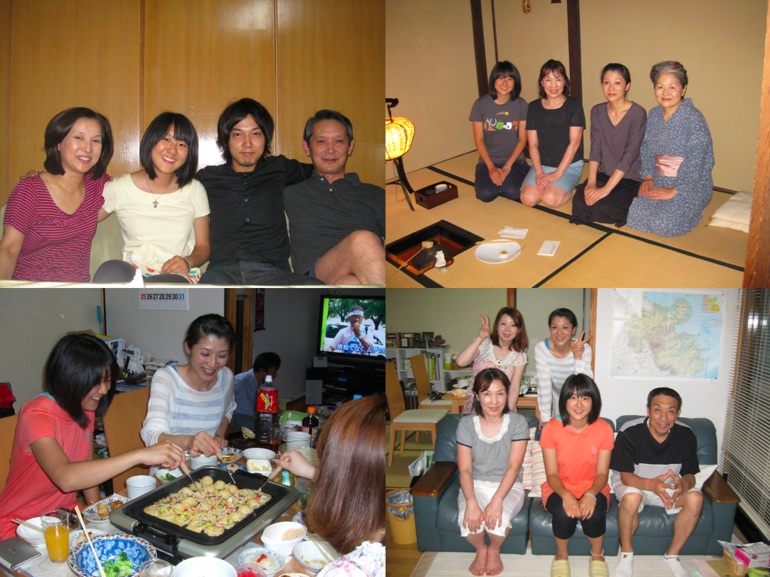
I met the Somiyas at Nakatsu train station that afternoon. The family was just Mr. and Mrs. Somiya, since all three of their sons live elsewhere in Japan now. One thing that stood out about Nakatsu is its flatness and rice paddies. Again, I felt so privileged to be able to visit that place because it was yet another type of lifestyle in Japan. Mr. and Mrs. Somiya were also very welcoming. They spent the weekend taking me out to different neighboring locations such as a local shrine, an old town, Yumeootsurihashi (suspended bridge), and Yufuin town. Another day, they even took time off work to bring me to Akiyoshido, a limestone cave located in Yamaguchi Prefecture. Mr. Somiya went out of his way and helped me search up some places that I could go visit on my own on the days they had work. On the days where they were at work, I visited Beppu’s “Hell Tour” as well as rode their bike around Nakatsu city, visiting Nakatsu Castle, Yukichi Fukuzawa’s residence (the man on the 10,000 yen and founder of Keio University), Yume Town and Jusco, local department stores.
During my stay with the Somiyas, I also got to meet Ms. Morita and Ms. Kaoru who work at the same company as Mr. Somiya. They came over for dinner on July 7th, also known as “Tanabata” and we had a great time making takoyaki. After that, Mrs. Somiya drove me to an elementary school gym where we watched Ms. Morita and her team practice a variation of volleyball called “soft-volley.” The night before, I attended a tea ceremony by Ms. Morita’s mom with Ms. Somiya at the Morita’s residence, which was a 180 year old traditional Japanese home. We talked about many things and seeing that I had an interest in sports, Ms. Morita invited us to watch her (and maybe play) “soft volleyball” team practice the next day. At the end, Mrs. Morita was also interested in hosting other students and asked about how they could apply to become a PPF host family.
Previously, all my exposure to Japanese culture came from the media, but now I have come to understand Japanese culture from a first-hand point of view and have seen that Japan is more than what I see on TV or find on the internet. I find it surreal that I managed to communicate with so many people in my broken Japanese! Everyone was very supportive and that really helped me improve my Japanese. Through the help of PPF and the host families, I was able to experience Japan in such a special way that I would not have been able to experience else wise. I am so grateful to have been able to meet so many different people and talk to them about so many different things, sharing differing ideas, talking about politics, psychology, religion, relationships, Japanese, Chinese, English, traditions, being open minded, and much more. It was also a pleasure to share with people my own experiences in Taiwan and America. I am deeply thankful for the three host family's hospitality. My biggest regret is not being able to express my gratitude to my host families as well as to PPF in Japanese, and the most I can say is “Itsumo wazawaza arigato gozaimashita!” Now that I have met so many people, I can’t wait to go back one day to visit them or maybe take them around Taiwan or America if they every come to visit!
 My four-week-long home stay in Japan during December 2009 and January 2010 was a wonderful experience. During my trip, I met four wonderful host families, learning Japanese language and culture from them. And more importantly, I have developed long lasting friendships with my host families.
My four-week-long home stay in Japan during December 2009 and January 2010 was a wonderful experience. During my trip, I met four wonderful host families, learning Japanese language and culture from them. And more importantly, I have developed long lasting friendships with my host families.
My first host family is the Futakatas in Kitaibaraki-shi, Ibaraki-ken, which is a small town in the Kanto region. Although I have learned Japanese for about two years in UC Berkeley, I was aware that I was still far from fluent. Thus I was nervous in the beginning about communicating with my host families. However, the Futakatas were very accommodating and I tried to communicate with them as much as I could in Japanese. Mrs. Futakata taught me a lot about Japanese culture and manners. She also took me to her company’s end-of-the-year party, hot spring, as well as Mito-shi, the capital of Ibaraki-ken. It was my first time going to a hot spring and I felt interesting and relaxed.
I travelled from Kitaibaraki-shi to Okazaki-shi, Aichi-ken and met my second host family, the Onos. They guided and supported me to make daily trips to Nagoya, Yokohama, and Hakone during daytime I was able to see the Mount Fuji, which I have dreamed about visiting since a long time ago. Every evening, I talked with Ono’s family about life-style, cuisine, pop-culture, etc. We have many common interests and soon I felt like we have known each others for a long time. Although I stayed in their family for only four days, the time we spent together would be an unforgettable memory in my brain.
My third stop was in Saikai-shi, Osaka and my host family was the Tsutsumi family. I made day trips to Kyoto, Nara, Kobe, and Osaka city. I was able to visit many temples and shrines, exploring Japanese ancient architectures and traditions. Also, since I lived with the Tsutsumi family during the New Year’s Day, I got the chance to experience the Japanese way of celebrating the New Year. I went to the temple with the Tsutsumi family, making a wish for the New Year. I also had the Japanese traditional meals for New Year with them, tasted Macha, and had kimono dressed. It was really interesting and enjoyable for me to have such a special New Year, and I was also impressed by their family life at home.
Leaving Osaka, I travelled to Nagano and met my last host family, the Itos. Mr. and Mrs. Ito picked me up in the Nagano station and then took me to Zenkouji, the most famous temple in Nagano city, before returning back home. Their home is in a small town near Nagano city called Chikuma-shi. During my stay, I travelled a lot with Mr. and Mrs. Ito, For example, they took me to the famous Matsumoto Castle, a famous ancient battle field, and some other scenic spots of historical significance. They also treated me to the sushi bar and noodle restaurant, where I tasted the typical Japanese cuisine.
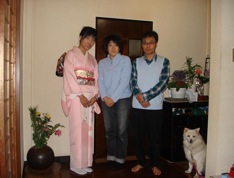 Besides travelling, Mrs. Ito arranged for me to experience many different aspects of Japanese culture. She brought me to her Kumon cram-school class, where I had a chance to talk with her students and shared our experiences of studying, as well as the different school systems in both Japan and the United States. Another evening, she bought me to see Taiko club practice session. Mrs. Ito also taught me to cook some Japanese cuisine and let me practice calligraphy. My favorite experience was that Mrs. Ito introduced me to a Kendo class, where I was taught the three basic moves and had a chance try out a few practice matches. And in the end the Kendo teacher even took out his real sward and let me tried practicing the moves with it.
Besides travelling, Mrs. Ito arranged for me to experience many different aspects of Japanese culture. She brought me to her Kumon cram-school class, where I had a chance to talk with her students and shared our experiences of studying, as well as the different school systems in both Japan and the United States. Another evening, she bought me to see Taiko club practice session. Mrs. Ito also taught me to cook some Japanese cuisine and let me practice calligraphy. My favorite experience was that Mrs. Ito introduced me to a Kendo class, where I was taught the three basic moves and had a chance try out a few practice matches. And in the end the Kendo teacher even took out his real sward and let me tried practicing the moves with it.
I am very thankful to the PPF and my four host families. We were like real family members while living, travelling, and talking together. From my home stay, I was able to experience Japanese customs and culture, help in pioneering my vision of becoming a person more aware of the world. And I have gained the courage and confidence to meet new challenges and create new ideas with my concentration and awareness.
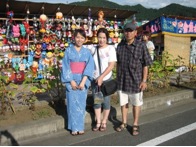 I went to Japan with a lot of my own thoughts about it. I was going for the shrines, Jinja's, traditional festivals, Japanese daily traditions. I know I would like them. I have seen them on television programs. I have read about them on books. Yet, I was amazed, not only by ancient architectures, respectful traditions, but also by the people I met. It was them who showed me what real Japanese cultures are. It was their kindness and love for their own culture and traditions made me realize what I really love about Japan.
I went to Japan with a lot of my own thoughts about it. I was going for the shrines, Jinja's, traditional festivals, Japanese daily traditions. I know I would like them. I have seen them on television programs. I have read about them on books. Yet, I was amazed, not only by ancient architectures, respectful traditions, but also by the people I met. It was them who showed me what real Japanese cultures are. It was their kindness and love for their own culture and traditions made me realize what I really love about Japan.
I spent the first 12 days of my trip around Tokyo. My host family Ooigawa family lives in Urayasu, the Disney town. At the day I arrived at Narita Airport, Mr. and Mrs. Ooigawa and their lovely daughter Yuyi came to the airport to pick me up. The fourth member of the family, Maru, a female Dachshund, was waiting for me at home. They live in a very lovely place. Their apartment has an extremely good ocean view. I always liked to go to the balcony and enjoyed the breeze came from sea. The next day of my arrival, I boarded a cruise with the Ooigawa family. It was their friend's cruise and we went cruising for a while in the Tokyo bay after having barbecue on the harbor. There are three families on board and everyone was warm to me. They also told me a lot about the next two places I was going to stay. It was the first time in my life to listen to and speak Japanese all day long. The intensive Japanese environment gave me a very strange but interesting experience. Sometimes there were things that I did not know how to say in Japanese. But as a Chinese, it was quite convenient to use Kanji. 99% of the time, the person I was talking to will know right away what I wanted to say. The other 1%, since Mr. and Mrs. Ooigawa speak very good English, they would always help me. It was a quite special day. I had a great time and I feel like I would never forget the feeling of happiness on that cruise.
During my stay in Urayasu, I went to Tokyo almost every weekday. Odaiba, Shinjuku, Harajuku, Akihabara, Tokyo tower, Ginza, Omotesando, Shibuya, Tokyo University, Yoyoki, Ikebukuro, Tsukichi market. I almost went everywhere in central Tokyo. Even the Ooigawa's were impressed with the number of places I had been. It was happily tiring but exciting.
On the twelfth day, I said goodbye to the Ooigawa family and headed for Oita, Kyushu. After spending 6 hours on Shinkansen, I arrived at Nakatsu, Oita. Nakatsu was completely different from Tokyo. First, it was much hotter here. Second, the entire city was flat. No skyscrapers, no fancy buildings. It was a quiet peaceful little town. My second host family, the Somiya family, lives very close to the train station, hence very convenient to go to other places by train. Mr. and Mrs. Somiya live with their second son, Daisuke. Daisuke is a little older than I am and already has a job. It was the first time the Somiya family had been a host family. But they were extremely kind and planned everything well for me. Mr. Somiya even made a guide book showing where was worth going on his own before I arrived. Due to the weather, I only managed to go to Hakata and Beppu on my own on weekdays. But thanks to Mr. and Mrs. Somiya, my weekend there was extremely busy and exciting. We went to Flower Park, where every scene was like an articulated drawn picture. We also went to Aso Mountain, the famous living volcano in Kyushu. The Somiya's also took me to Gion Festival held by a nearby town. I was amazed that almost everyone in town was participating in the festival, either by performing or by watching. Businesses were closed and everyone gathered in central town to celebrate the festival. We had an extremely difficult time finding a place to eat for this reason. In the evening of that day, the entire family, including me, went to a hot spring. It was my first time went into a hot spring. Japanese have a special way of going into hot springs. I found it a little wired but interesting. We had a great time over dinner. Daisuke kept telling jokes. The Somiya's really made me feel being part of the family. The next day, despite the high gas price and toll fee, Mr. and Mrs. Somiya again drove me to another nearby town, where there will be fireworks display. Mrs. Somiya was also kind enough to lend me her Yukata and helped me dressed up. This firework was the biggest in Oita, so there were even more people than the Gion Festival the day before. Although crowded, the firework was great. Watching fireworks while wearing Yukata makes me feel like Japanese. Suddenly I feel so touched. How nice of the Somiya's to give me such an authentic experience!
 I was even more touched when I realized that Mr. Somiya gave up his three day weekend just to be able to drive me to another famous hot spring town on the last day of my stay. On the last day, Mrs. Somiya also returned home early and we cooked Takoyaki at home. It was the first time I cooked Takoyaki. Fortunately, it went pretty well. Takoyaki was delicious. The Somiya's was doing everything they can to left me with good memories.
I was even more touched when I realized that Mr. Somiya gave up his three day weekend just to be able to drive me to another famous hot spring town on the last day of my stay. On the last day, Mrs. Somiya also returned home early and we cooked Takoyaki at home. It was the first time I cooked Takoyaki. Fortunately, it went pretty well. Takoyaki was delicious. The Somiya's was doing everything they can to left me with good memories.
I was once more impressed by Shinkansen. I set off at 10 in the morning and I was in Osaka city by 2 in the afternoon. My third host family was the Tsutsumi family. They live in Sakkai city. Mrs. Tsutsumi and his youngest son, 8-year-old Yutai came to the train station to pick me up. Before going back home, Mrs. Tsutsumi took me to an Emperor's Tomb. And we also had Macha there. She said it was the welcoming present. It was my first time to taste real Macha. It was bitter but tastes great. Going back home, I met Mr. Tsutsumi, oldest son Hutoshi, and third son Humito. This time it was a Japanese style house. And I was able to sleep in a Tatami room. It felt a little bit surreal since I was physically in a room that I have only seen on TV dramas or animations. The next day, Mr. and Mrs. Tsutsumi, Yutai and I went to Kyoto, where a lot of ancient architectures and traditions were well preserved. Ryo An temple, Kin Gaku temple and Kyomizu temple are all world famous. Being in Kyoto was very different from being in Osaka. Kyoto was quite and elegant while Osaka was very much alive and modern. It was said that near Kyomizu Temple there will sometimes be Geishas and Maiko's walking in the streets. Unfortunately I did not see one myself, although I did go to a studio and try to be one. There were also a lot of Shrines in Kyoto. However I was not able to go to a lot of them due to time constraints. I went to Nara alone and also spent a few days in Osaka city. The thing I enjoyed most while I stayed with the Tsutsumi family was the “family life” at home. Since I do not have any sisters or brothers myself, I hardly know what it feels like to have one. The Tsutsumi family gave me the experience of being with a large family. We had a great time go watching movies together, having dinner together, and sometimes just being at home together. It was a family full of energy. Although I only stayed there for 5 days, I felt I experienced a lot.
The best part of this home stay program is that I got to stay at three very different places, Kanto, Kyushu, and Kansai. A lot of customs were different, environment was different, even accent was different. I was not only able to experience Japanese culture which is different from Chinese or the U.S. culture, but also I was able to experience different Japanese cultures. It helped me a lot both culture-wise and language-wise. And my host families were so nice that I was able to have great experiences and memories. They are the persons who showed me the real Japanese culture. To me, they are the real attractions of Japan. It was a summer I would never forget.
In the summer of 2004, I visited Japan for the first time, traveling down the coast from Tokyo to Fukuoka. It was a spectacular trip full of unforgettable moments. However, unable to intimately converse with natives, I felt like I was merely skimming the surface of what Japan had to offer. Since then, I have been studying Japanese at UC Berkeley for the past two and a half years. I learned about the Pan Pacific Foundation's Homestay Program, and I immediately knew it was a rare opportunity for me to dive deeper into Japanese culture. PPF arranged for me to spend three nights with a family in Chiba Prefecture, and ten nights with a family in Nagano Prefecture. From this experience, I discovered what I had missed out on merely as a tourist.
My homestay (from January 5 ? 18, 2007) took place during what would be one of Japan's warmest winters. Arriving not long after New Year's, I caught glimpses of residual festivities throughout my trip: New Year's photo-postcard mailings, bustling temples, and New Year darumas, to name a few. My first host family, the Oigawas, live in Urayasu-shi, Chiba. Like other bedtowns, many of the city's residents take the one-hour train commute to work in Tokyo. Located right by Tokyo Bay, and not far from Tokyo Disneyland, the city consists of relatively recent developments from fancy hotels, residential mansions (Japanese high-rise apartment buildings), and a bustling shopping mall located right by the local train station, Shin-Urayasu Eki. My stay with the Oigawa family coincided with a three-day weekend, including the Japanese national Coming of Age holiday, seijin no hi. It also coincided with the last few days of winter break just before the first day of winter semester. I was particularly fortunate to be able to spend almost all of my time with my host family.
Although I had been studying Japanese, I was well aware of the fact that I was far from fluent. I was a bit nervous about offending my hosts unknowingly, but not long after I arrived I realized how receptive and accommodating they were. I tried my best to communicate as much as possible in Japanese, but I was also able to fall back on the Oigawa's superb English skills. My host family consisted of Y, her husband K, their nine-year-old daughter Y, and their miniature foxhound named M. Their apartment was on one of the top floors of a mansion so it afforded a particularly striking view of Tokyo Bay on sunny mornings.
During my first evening, Y prepared nabe, a one-pot stew of tofu, Chinese cabbage, mochi and other vegetables. The four of us sat down for a quiet Friday evening meal, chatting leisurely and eating out of the same pot as we got to know each other. The next Saturday morning, Y used the leftover dashi from the previous night's nabe to make our breakfast of ojiya, a type of pourage. A storm system was blowing through the region that day, so we spent most of the day indoors. As rain poured down outside, I milled around the apartment and soaked in the atmosphere of their home while the family went about with their own activities. K worked on his computer, while Y did some household cleaning and Y studied in preparation for the start of school. Y also helped me study some Japanese vocabulary and I helped her with her English.
I had many meaningful moments during my stay with the Oigawa family. My conversations with the Oigawa family were particularly insightful. During and after dinner, we talked about numerous topics ranging from current events, international issues, culture, and personal thoughts. I also spent some time shopping at the supermarket with Y during which I inundated her with questions. The almost flawless condition of the fruits and vegetables impressed me. In particular, I was amazed to find individually wrapped celery stalks for sale. One night, they took me out to dinner at a sushi bar, where I was offered whale.
On Sunday, we caught the train to Tokyo where we watched a kabuki show about the legendary story Kanjinsho. For both Y and I, it was our first time watching a live kabuki show. We grabbed the last remaining standing-room spots for the sold-out showing. From the back of the theater, I was able to observe other members of the audience, a mix of locals and foreigners like me. Some older members of the audience shouted out names throughout the show. Y later explained to me that it was a traditional way of showing support for the performers. Later that day, we also watched the final rounds of a sumo tournament.
During my last evening, we played a game of Scrabble, which I had brought from home. Despite an obviously unfair advantage, I did not win the game.
From Urayasu-shi, K traveled with me by the local train to Tokyo Station where I rode the shinkansen to Nagano. From there, I met my second host mother, Emiko, and together we headed to her home in a small town called Chikuma-shi. Their home was a short distance away from small mountain ranges and surrounded by snow-covered rice and vegetable fields. My second host family, the Ito family, grew their own supply of rice each year. I was also surprised to find a local vending machine where people can have their rice de-hulled for a few hundred yen. The vegetables that Emiko's mother, Fumii, had grown and preserved for the winter were delicious.
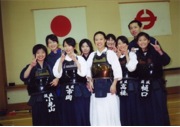 During my stay in Chikuma-shi, I spent most of my time with Emiko, who introduced me to many people and arranged for me to experience many different aspects of Japanese culture. One of my favorite experiences was when Emiko brought me to her Kumon cram-school class where I had a chance to meet her students and share information about my home in California. I made up a quiz about America, and the students had a blast trying to answer my questions in return for snack prizes. I also practiced English conversations with a couple of students, and I was very impressed by the enthusiasm with which they spoke to me. Emiko also introduced me to her suibokuga (India-ink painting) teacher, who shared some of her works and gave me a quick painting lesson. Another day, I visited an eitegami (picture letter) meeting at the community art center where I had a chance to see their paintings and try creating my own. Emiko also brought me to a shippouyaku (cloisonne´-ware) class where I learned how to create my own pieces. I spent another evening observing a Taiko club practice session and joined in on a couple of rounds. Another evening, I joined a children's Kendo class, where I was taught the three basic moves and had a chance try out a few practice matches. Emiko even arranged for me to spend the day learning how to snowboard with her family friend in Hakuba in the Japanese Alps.
During my stay in Chikuma-shi, I spent most of my time with Emiko, who introduced me to many people and arranged for me to experience many different aspects of Japanese culture. One of my favorite experiences was when Emiko brought me to her Kumon cram-school class where I had a chance to meet her students and share information about my home in California. I made up a quiz about America, and the students had a blast trying to answer my questions in return for snack prizes. I also practiced English conversations with a couple of students, and I was very impressed by the enthusiasm with which they spoke to me. Emiko also introduced me to her suibokuga (India-ink painting) teacher, who shared some of her works and gave me a quick painting lesson. Another day, I visited an eitegami (picture letter) meeting at the community art center where I had a chance to see their paintings and try creating my own. Emiko also brought me to a shippouyaku (cloisonne´-ware) class where I learned how to create my own pieces. I spent another evening observing a Taiko club practice session and joined in on a couple of rounds. Another evening, I joined a children's Kendo class, where I was taught the three basic moves and had a chance try out a few practice matches. Emiko even arranged for me to spend the day learning how to snowboard with her family friend in Hakuba in the Japanese Alps.
I was thoroughly amazed by all the different people I met and all the new experiences I had while staying in Chikuma-shi. However, the moments I had in the Ito family's home are the ones I treasure most. One evening following dinner, Emiko brought out her brush and sumi-ink and taught me some basic shodou, or calligraphy, techniques. I spent a good amount of time kneeling on their living room floor practicing on old newspapers writing my kanji over and over again. I thoroughly enjoyed it. During other evenings at home, I watched Japanese dramas with Emiko and her daughter Rika. While I didn't have a chance to spend much time with Rika because she was busy with work on most days, I really enjoyed the conversations we had when she returned home from work in the evenings. I probably asked a lot of nai¨ve and mundane questions, but Rika's answers were sincere and thoughtful. Emiko and I spent one evening preparing food to place in bento boxes for lunch the next day. I had seen bento boxes in movies before, but I didn't realize how much effort went into making them. Our bento boxes were filled with smoked salmon and cabbage, deep-friend sweet potatoes, home-grown spinach, egg, fish, and even star-shaped carrots. During one of my final days in Chikuma-shi, I woke in the morning and noticed that snow had fallen during the night. Emiko and her husband Satoru were busy shoveling the driveway and I immediately rushed out to join them. They welcomed me, handed me a shovel, and we cleared the driveway together.
My homestay experience showed me how Japan is much more than the typical guidebook attractions. Getting to know the people in Japan by living in their homes gave me an entirely new perspective on Japanese culture, one that I would have never been able to perceive as a tourist. One of the first concepts I learned while studying Japanese was the concept of in-group and out-groups (uti and soto) and how these relations dictate the way people speak to each other. I may be jumping to conclusions, but I truly felt that for the short time I stayed with my host families, I was also a member of their family. Wherever we went, either dining out in restaurants, visiting museums and temples, or even amongst the chaos of packed commuter trains, my host families took extremely good care of me and were always available whenever I needed help. For this reason, I treasure my homestay experience, as it was a unique once in a lifetime opportunity, a chance to connect with the dreams, goals, and daily life of people in Japan. Now that I have had a glimpse of the depth of Japanese culture, when I go back it will be difficult not to want to look even deeper.
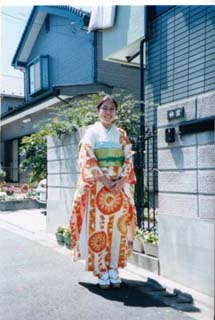 This summer I went on the PPF Homestay program for two weeks. It was the best cultural and educational experience of my life so far. The first week, I stayed in Tokyo with the Kamimae Family. The father along with his youngest daughter Tamami came to the airport to pick me up. The train ride was 4hours. They prepared a lot of food for me because thinking since I was coming from the United States, I would be a big person. In their family there were two other daughters who were about the same age as me. Every meal, the mother cooked delicious Japanese food. I also had sushi, sashimi, a lot of fish, soba, yakisoba, and much more. She even taught me how to make Okonomiyaki, which is now my favorite Japanese food when eaten with Tonkatsu sauce. The family went sight seeing with me too the Imperial palace, Akihabara, Shibuya, Sunshine City (the high towers) in Ikebokuru, and other places as well. They were extremely nice and patient with me while I was there. The mother was very kind and let me try on her kimonos and take pictures in them. I even went to the Tokyo supermarkets and library. Everything in Japan is cute and comes in a small package. In Tokyo, the host family taught me a lot of Japanese words, customs, and culture. The transportation is wonderful but also very confusing since there are so many options. My host family parents came with me to take the bullet train to see me off to Kyoto. And on my way back from Kyoto to the Narita Airport, they met me again to make sure I got on the right train.
This summer I went on the PPF Homestay program for two weeks. It was the best cultural and educational experience of my life so far. The first week, I stayed in Tokyo with the Kamimae Family. The father along with his youngest daughter Tamami came to the airport to pick me up. The train ride was 4hours. They prepared a lot of food for me because thinking since I was coming from the United States, I would be a big person. In their family there were two other daughters who were about the same age as me. Every meal, the mother cooked delicious Japanese food. I also had sushi, sashimi, a lot of fish, soba, yakisoba, and much more. She even taught me how to make Okonomiyaki, which is now my favorite Japanese food when eaten with Tonkatsu sauce. The family went sight seeing with me too the Imperial palace, Akihabara, Shibuya, Sunshine City (the high towers) in Ikebokuru, and other places as well. They were extremely nice and patient with me while I was there. The mother was very kind and let me try on her kimonos and take pictures in them. I even went to the Tokyo supermarkets and library. Everything in Japan is cute and comes in a small package. In Tokyo, the host family taught me a lot of Japanese words, customs, and culture. The transportation is wonderful but also very confusing since there are so many options. My host family parents came with me to take the bullet train to see me off to Kyoto. And on my way back from Kyoto to the Narita Airport, they met me again to make sure I got on the right train.
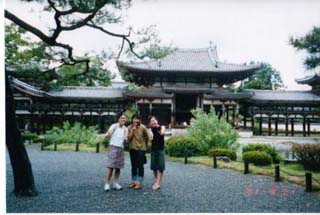
When I first got into Kyoto, there was a typhoon. So the first day, we were not able to go out, watched a movie, and went bowling. Kyoto was beautiful and it was here I saw the old temples and shrines. But the following days the weather cleared up so everyday we visited about 3 different temples. So total, we visited about 12 different famous tourist spots including the Nijo Castle, Sanjusangendo, Kiyomizu temple, and more. In Kyoto, I ate sushi, tempura, takoyaki, green tea ice cream and more. I tried different types of green tea and they varied from sweet to bitter and hot to cold. I preferred the cold and sweeter ones. I bought a summer kimono (ukata) and a lot of souvenirs for family, my friends, and myself. I also learned in Kyoto that they use different words than the people in Tokyo. At first it was hard to adjust to but eventually learned the dialect.
I was really lucky to have had two host families in both Tokyo and Kyoto. I felt that the two cities and host families were quite different and offered me the opportunity to see the modern and cultural side of Japan. Thank you for this opportunity and I really believe that if any other student has this great chance to go to Japan through the PPF Homestay program, they should definitely apply for it.
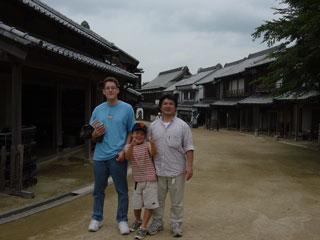 Thanks to PPF, I was able to spend three weeks with two host families in the greater Tokyo area in June 2003. I count the trip among the most rewarding and meaningful experiences of my life. Of course, after two years of Japanese classes and a lifelong fascination with Japanese culture, it was a thrill for me just to be able to see Japan firsthand, but the PPF program added another dimension in that I was able to live with two extremely warm and generous families and form what I'm sure will be lifelong friendships. More so than tourism, I enjoyed simply talking about world events with my hostfamilies, laughing together at Japanese TV shows, chatting over dinner, and so on. The Ohazamas and Oyakes fielded my never-ending stream of questions about Japan, and I shared my own perception of America.
Thanks to PPF, I was able to spend three weeks with two host families in the greater Tokyo area in June 2003. I count the trip among the most rewarding and meaningful experiences of my life. Of course, after two years of Japanese classes and a lifelong fascination with Japanese culture, it was a thrill for me just to be able to see Japan firsthand, but the PPF program added another dimension in that I was able to live with two extremely warm and generous families and form what I'm sure will be lifelong friendships. More so than tourism, I enjoyed simply talking about world events with my hostfamilies, laughing together at Japanese TV shows, chatting over dinner, and so on. The Ohazamas and Oyakes fielded my never-ending stream of questions about Japan, and I shared my own perception of America.
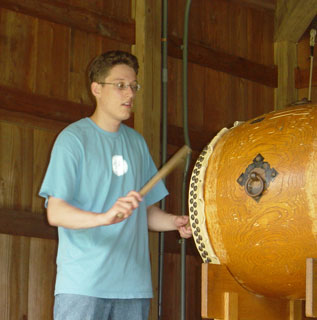
In those three weeks, I had so many interesting experiences (most of them new) that I can hardly remember all of them at once. I saw various faces of Japan, from Nikko to Yokohama to Matsushima to Akihabara (where I want to live someday!) I tried gyuutan (beef tongue), kaiten-zushi (conveyor belt sushi), eel, shabu shabu, and a bentou box, the contents of which are still a mystery to me. I learned how to play shogi, how to survive a crowded Tokyo subway, and why one doesn't drain the tub when one is finished using it. I played Taiko no Tatsujin (a drum game) with the eight-year-old son of the Ohazamas and countless beach ball games with the four-year-old son and two-year-old daughter of the Oyakes. In all of my everyday dealings, I spoke Japanese to the best of my ability, and I noticed a difference in my ability at the end of the three weeks.
I'm probably not a typical PPF participant - I'm a 23-year-old graduate student in environmental science who hopes to be able to attend conferences and share ideas in Japan - but the experience was amazing for me on both academic and personal levels, and I highly recommend it even if you're not a Japanese major or an undergraduate. Thanks again to PPF and to the Ohazama and Oyake families for making it all possible.
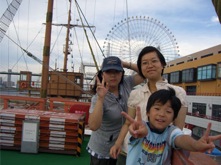 Through the PPF Homestay Program, I was able to stay in four different Japanese families, one per week, in June/July of 2008. The four families that I stayed with were the Oigawa family in Chiba, the Kudomi family in Gifu, the Kawai family in Osaka, and the Futakata family in Ibaraki. These families were very different from one another and I was able to experience a different life style from each family. Even though I was a total stranger to the families, they all treated me as if I were part of the family, which really enabled me to practice and understand their customs and life styles.
Through the PPF Homestay Program, I was able to stay in four different Japanese families, one per week, in June/July of 2008. The four families that I stayed with were the Oigawa family in Chiba, the Kudomi family in Gifu, the Kawai family in Osaka, and the Futakata family in Ibaraki. These families were very different from one another and I was able to experience a different life style from each family. Even though I was a total stranger to the families, they all treated me as if I were part of the family, which really enabled me to practice and understand their customs and life styles.
The first family, Oigawa family in Chiba, lives in a modern apartment complex. It was a typical city-like family where the parents go to work until early evening and the daughter goes to tutoring school after school several times per week. Because of school and work, the apartment was empty during the weekdays, and I took the chance to go to various places in Tokyo by train. Even though they were so busy, they were very caring and spent the rest of the time with me. For example, Mrs. Oigawa held a party and invited her daughter’s friends over to the apartment along with their mothers. Therefore, I was also able to meet other people and had a chance to talk to them.
The second family, the Kudomi family in Gifu, was very different from the first. Because all the family members were adults, they did not live together. Therefore, I did not just stay in the same home, but stay in two different homes during the week. When the mother had work at night, I would stay in the daughter’s apartment and vice versa. Gifu was very different from Chiba. In Chiba, I was able to go to Toyko within 30 minutes by train, where the train station was reachable by bus in 10 minutes. However, in Gifu, nothing was in walking distance. Therefore, the mother and the daughter always accompanied me. The family was very considerate and had planned out the week nicely so that I could experience different parts of Japanese culture; for example, learning about the tea ceremony, wearing the kimono, and visiting historical sites.
The third family, the Kawai family, was another busy family, where the parents were at work and the children were at school during the day. Therefore, weekdays were again free days for me to explore Japan. This time, I went to Osaka, Kyoto and Nagoya when I was by myself. This family was very different from the others because the Kansai customs were very different from those of Kantou. It was very interesting learning, as well as comparing and contrasting the Kansai and Kantou customs and dialects. During the weekend, they also planned some activities and we had good times together. The children were also very lively and active and just treated me as their sister. I was glad to be able to talk to them and play with them as if we were siblings.
The last family, the Futakata family, was another family in a rural area. We spent most of the time together because local transportation was not very convenient. Despite their work, the parents still found time to take me to site-seeing places during the weekend. However, most of the time I was at home with the daughter, where I was able to learn what the daily life of a Japanese family. This family was also exceptional because during my stay, another exchange student from Germany was also present. Therefore, I was also able to make friends with the exchange student and learn about her school life in Japan.
This one-month in Japan was an invaluable experience to me, for I would never be able to gain the same experience as a tourist in Japan. I had a much better understand of Japanese people after this homestay program, not only their customs or life styles, but also how they treat others and communicate. All the families were very supportive and caring and I had great times with them. I am glad to have been a part of each of them and I hope to stay in touch with them as best as I can.
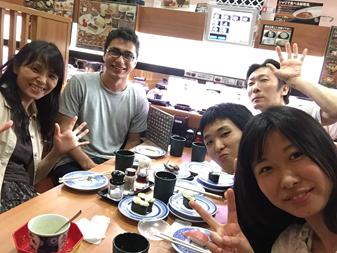 This August I had the opportunity to do a two week homestay in Japan through PPF. I stayed with two families, each for one week. It was an amazing experience that allowed me grow as a Japanese learner, and also exposed me to daily Japanese life and culture.
This August I had the opportunity to do a two week homestay in Japan through PPF. I stayed with two families, each for one week. It was an amazing experience that allowed me grow as a Japanese learner, and also exposed me to daily Japanese life and culture.
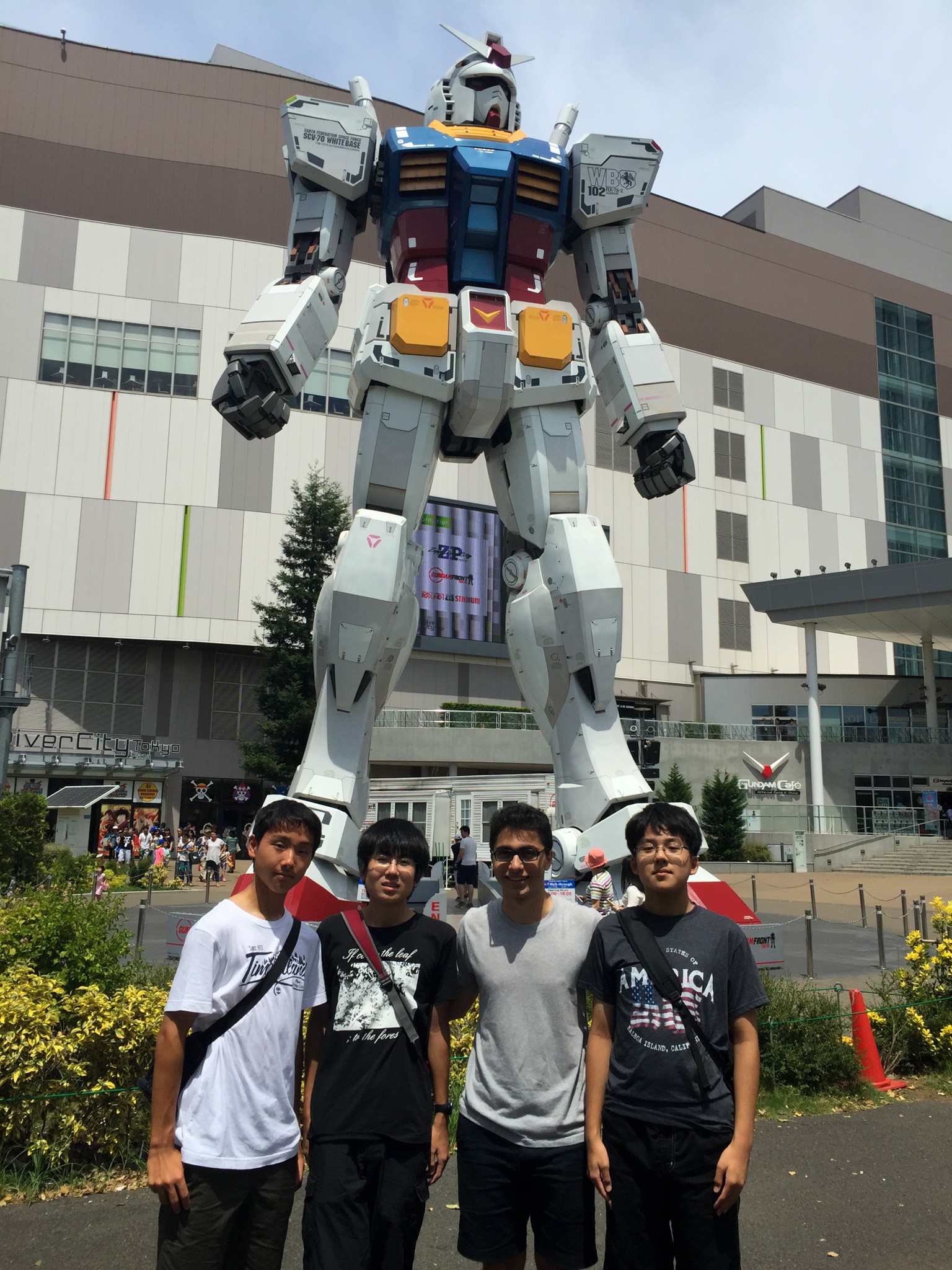 The first family I stayed with was the Ono family in Okazaki, Aichi. They were a family of four and had two kids that were around my age. This homestay was the first time I had ever come to Japan (or traveled alone for that matter), so I was a bit scared and hesitant about some things, including the extensive public transportation systems that Japan has. Nonetheless, the Ono family helped me out with everything and taught me all about their daily lifestyle. We talked about so many things together, from music to movies to politics to everything and anything. My Japanese knowledge is by no means perfect, so the vocabulary in these conversations was a bit difficult. However, I had a dictionary app on my phone, so whenever there was a word that I didn’t know, the Ono family would happily wait for me to look up the word and then continue the conversation. Throughout the week I did various things such as visit Okazaki Castle (where the famous Tokugawa Ieyasu was born), explore Nagoya (a very populated nearby city), watch a movie in Japanese at the movie theater, visit several malls, stroll through several parks, and more. My most favorite places were the places I went together with the Ono family: the Tanabata festival in Anjo (which is ridiculously popular) and a park called Denpark at which I got to see hanabi (fireworks). Okazaki was definitely not the stereotypical Tokyo-esque city that is portrayed in media, but it was absolutely beautiful and I am so glad to have gone there and stay with the Ono family.
The first family I stayed with was the Ono family in Okazaki, Aichi. They were a family of four and had two kids that were around my age. This homestay was the first time I had ever come to Japan (or traveled alone for that matter), so I was a bit scared and hesitant about some things, including the extensive public transportation systems that Japan has. Nonetheless, the Ono family helped me out with everything and taught me all about their daily lifestyle. We talked about so many things together, from music to movies to politics to everything and anything. My Japanese knowledge is by no means perfect, so the vocabulary in these conversations was a bit difficult. However, I had a dictionary app on my phone, so whenever there was a word that I didn’t know, the Ono family would happily wait for me to look up the word and then continue the conversation. Throughout the week I did various things such as visit Okazaki Castle (where the famous Tokugawa Ieyasu was born), explore Nagoya (a very populated nearby city), watch a movie in Japanese at the movie theater, visit several malls, stroll through several parks, and more. My most favorite places were the places I went together with the Ono family: the Tanabata festival in Anjo (which is ridiculously popular) and a park called Denpark at which I got to see hanabi (fireworks). Okazaki was definitely not the stereotypical Tokyo-esque city that is portrayed in media, but it was absolutely beautiful and I am so glad to have gone there and stay with the Ono family.
The next week I stayed with the Iida family in Isehara, Kanagawa.
The Iida family was a big family! I mostly traveled around Kanazawa and Tokyo with the grandchildren who were a little bit younger than me. The location was about an hour away from Tokyo so I took the train to various places in Tokyo such as Shinjuku, Shibuya, Harajuku, and Odaiba. I also visited Yokohama’s Minato-mirai and went to several exploratoriums. Later in the week we went to Hakone where I got to see kabuto beetles in a park near an active volcano!
Even though I went sightseeing and saw a lot in Japan, I think the best part was hanging out with the family. I got to share a bunch about American culture and learn a lot about the differences between American and Japanese culture. I loved sitting at the dinner table and just talking about random things. Overall, my experience was great!
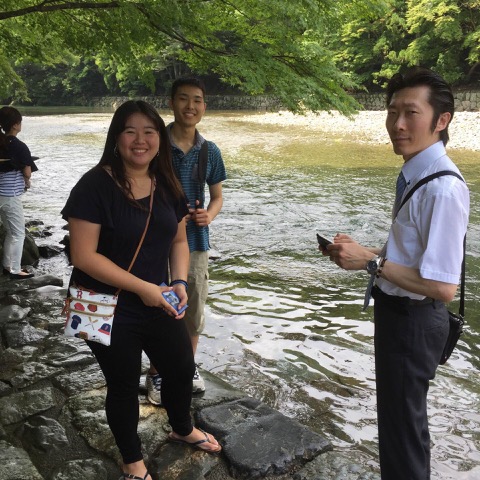 This summer (2016) I traveled to Okizawa and Isehara for my Japan homestay. Traveling by myself for the first time was definitely nerve-wracking. However, both host families were very nice and made me feel comfortable while I stayed there.
This summer (2016) I traveled to Okizawa and Isehara for my Japan homestay. Traveling by myself for the first time was definitely nerve-wracking. However, both host families were very nice and made me feel comfortable while I stayed there.
The first week, I stayed with the Onos in Okizawa. It was very awkward when I first arrived since my Japanese was a bit weak but soon not only the parents made me feel comfortable, but also their son and daughter. Since we were all around the same age, it was very easy to get a conversation going. I was able to explore Okizawa's famous places, like the Hatcho Miso Factory, Okazaki Castle, and Higashi Koen. But I also went to common places like the city library, and ate taiyaki and takoyaki.
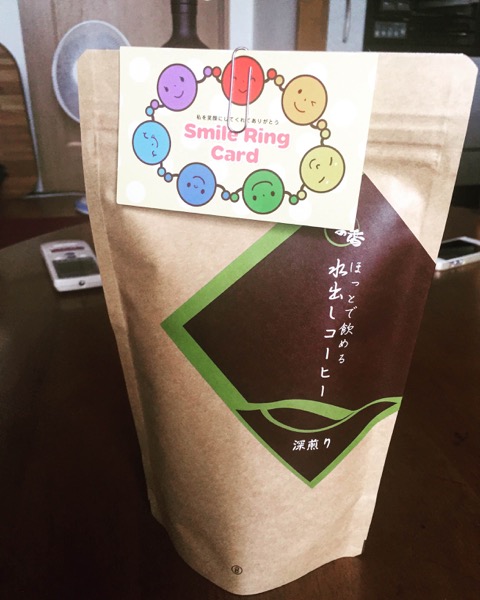 Since the parents had to run their coffee shop, where the coffee was very delicious, and their kids had to go to college, I explored the area myself most of the time. I went to Osu, the famous shopping place, Mozo mall, and Nagoya. I also went to Ise Jingu with the family on Sunday and learned how to pray the Japanese way. Their son also took me to a biology conference at a Japanese college and it was interesting to listen even if I didn't understand half. I really want to thank the Ono family for making such delicious food, and for the easygoing and comfortable home they provided for a week.
Since the parents had to run their coffee shop, where the coffee was very delicious, and their kids had to go to college, I explored the area myself most of the time. I went to Osu, the famous shopping place, Mozo mall, and Nagoya. I also went to Ise Jingu with the family on Sunday and learned how to pray the Japanese way. Their son also took me to a biology conference at a Japanese college and it was interesting to listen even if I didn't understand half. I really want to thank the Ono family for making such delicious food, and for the easygoing and comfortable home they provided for a week.

Next, I took the Shinkanshen, train, and bus to get to Isehara. It was less awkward as I had already improved my Japanese but I still had to get used to a new family. The first day I went to National Art Museum and Shinjuku to explore and shop around. Their two sons also took me to Oyama Cable and Yokohama: both beautiful places with amazing views. I was also able to explore the small town of Isehara and go to the supermarket with the grandparents. Two of the days I went to Tokyo and explored the city parts of Japan since both Okazaki and Isehara were more countryside.
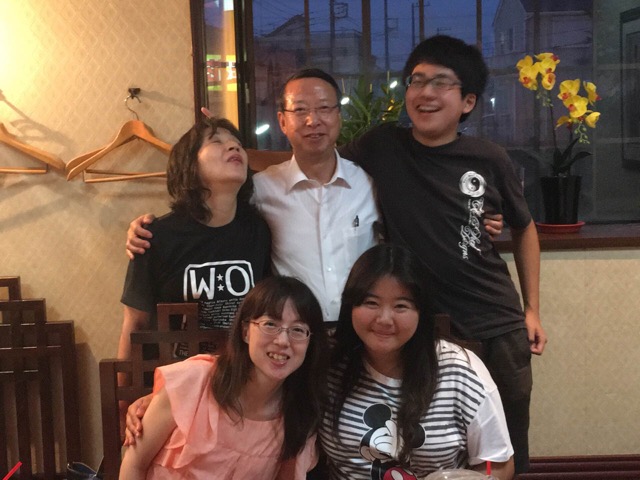 These two weeks in Japan, I was able to improve my Japanese, mold into the lifestyles of other families, and experience both traditional and modern culture. Without the welcome from both families, I wouldn't have been able to feel as comfortable as I did and really explore Japan. Thus, I believe this experience was an unforgettable one and I would go again if I could.
These two weeks in Japan, I was able to improve my Japanese, mold into the lifestyles of other families, and experience both traditional and modern culture. Without the welcome from both families, I wouldn't have been able to feel as comfortable as I did and really explore Japan. Thus, I believe this experience was an unforgettable one and I would go again if I could.
“Nagano? Oita?” I was quite surprised when I received my destination of the host families from Ms. Abiko of Pan Pacific Foundation. Before that, I thought Japan only consisted with big cities such as Tokyo, Osaka, Kyoto, and Nara. However, nothing could stop my curiosity and passion of visiting Japan for the first time.
It only took about two hours to fly from Beijing, where my mother lives in, to Tokyo. After I arrived at Haneda Airport, a super tidy, modern, and bustling metropolis was showed in front of me. Tokyo was so different from New York City, Beijing, Hong Kong, or any of those top cities in my memory that it had a certain aura of elegance and beauty. There were thousands of people crowded at the arrival level, but no one was rushing to others.
By reserved shuttle service, I arrived at my first host family, Ito-san’s, in Amenomiya, Chikuma-shi, Nagano-ken in the early evening. To be honest, I was amazed by the place. Ito-san’s house looked like a typical Japanese residential house, with grey tiles on the roof and big Japanese windows on the first floor. The family also had a huge garden, where they would hire gardeners to maintain every plant’s shape routinely. At the same time, Amenomiya is a lovely and serene small town where everyone knew each other pretty well. They visited each other’s place frequently and exchanged gifts at festivals.
In the week I stayed with Ms. Ito and her family, I experienced and learned how to prepare the beddings on the tatami, the traditional Japanese way of sleep. Tatami was relatively hard for me, but after a couple of days I realized it was pretty good for people’s spinal cord health. In Nagano-ken, I visited 1998 Winter Olympics stadiums including the ski jumping stadium in Hakuba-mura. Ski jumping looked rather scary for non-professionals, for that I could not even look down at the several-hundred meters tall jump platform. In my memory, Nagano-ken was so different from Tokyo that it had numerous mountains and other natural resources, which made it very unique and rememberable for a city girl like me.
Unlike the situation in the West or many other countries in the world, traditional Japanese family required the wife not to work outside but stay home to do all the housework. Women seemed not to have high social status. However, in the homestay experience, I found it interesting to see how Ms. Ito and her daughter loved doing housework and how Mr. Ito was responsible for other manual labor such as picking up vegetables from the fields. Ms. Ito’s daughter Rika has a little boy called Nanami, who is only two years ago this year and, of course, becomes the center of the happy family. For the purpose of providing the safest food for Nanami, every family member was strict about the food source. Mr. and Ms. Ito always chose those “made in Japan” products for little Nanami, which was said to be the highest and safest quality in the world. Looking at Nanami’s chubby belly every time after dinner, I gave my highest admiration to the parenting of Japanese family.
One special event I attended in Nagano-ken was Kendo practice. Kendo is an inspiring martial art, lifting up a person’s mind and body to higher, better levels. By giving a try in Kendo, I learned how to focus on one single thing for the moment and how to restrain the excessive power. It is interesting that Kendo uses bamboo instead of steel swords for battles, combining violence and peace together in a harmonious way.
The second week in Japan I traveled from Nagano-ken to Oita-ken, which was in far Kyushu. I spent a whole day on taking the Shinkansen trains and then transferring in Kyushu local trains. When I arrived at Mr. Somiya’s place in Nakatsu-shi, Oita-ken at the dinner time, I remembered my shirt was soaked with sweat totally. Kyushu was just hot as South California. Despite the hot weather, the time spending with Mr. and Ms. Somiya was super fun and precious too. On the first day, I visited the Nakatsu Castle, a landmark of Nakatsu-shi. That magnificent Japanese ancient tower still stood fearlessly amongst other tall buildings as if it continued guarding the city and its people. On the next day, I went to Hiroshima city myself, visiting the famous Peace Memorial Park. Deeply touched by the Atomic Bomb Dome and pictures of that disaster, I witnessed many young people including many from the United States wept tears quietly in front of the relic.
Mr. and Ms. Somiya were very hospitable hosts. Approaching the end of my stay, they held a home party to accommodate their friends, colleagues, and me. Mr. Somiya cut many giant bamboos from his own garden and prepared a “nagashi somen and Japanese BBQ” feast. All kids and adults had fun with “nagashi somen” where they used chopsticks to pick up noodles from the rapid flowing water. Japanese home party was so hilarious that I had tons of delicious homemade food and got to know many local friends.
Two-week was short and I returned home with unfinished mood but great gratitude. Thanks to PPF offering me such an important and rare chance to visit Japan and to grow long lasting friendship with two amazing host families!
August 2016
For as long as I can remember, I have always had a fascination with Japan. Unsurprisingly, I would often get the question: “Why?” Was it the culture? The history? The lifestyle? To be completely honest, I cannot say that I know the answer. For the longest time, I have asked myself, “Was it really Japan I was in love with? Or was it the image of Japan that I have romanticized growing up?” With that question in mind, I applied for the 2017 PPF Homestay Program. I wanted to really experience Japan – not just as a tourist, but as a local (or as close to one as I can be) – so that I can finally answer the question once and for all. When I received the email notifying me of my first homestay location (Nagano!), it finally hit me that this was actually happening. I immediately got started in drafting an introductory email thanking Ito-san for taking me in. Over the next few days, I would spend hours and hours reading Ito-san’s replies and typing up responses that were hopefully somewhat understandable.
The hardest part was arranging the transportation from Narita Airport. Ito-san’s home in Nagano was 4 hours away by train and would take multiple transfers. My other option was a shuttle bus, but I was warned that they spoke zero English and that I would not know the information of the driver until I arrived in Japan and called the company. I went with the latter choice (it was much cheaper), and Ito-san made the process so much easier by offering to reserve the shuttle for me.
My experience in Nagano was amazing. The place itself was just so beautiful; the house had its own garden and the property was surrounded by rice fields and mountains. Everything was so green and lush, and everything seemed perfect – even the buildings seemed to fit perfectly in the scenery. Ito-san’s house was a traditional house too. For the week, I had my own room, complete with a tatami mat floor, a futon to sleep in (Ito-san taught me how to properly fold it), and the most amazing view of the Nagano scenery.
I was as happy as I can be. As I arrived late on my first day, the next morning was when I was introduced to the smallest member of the family and the sweetest little 3-year-old I’ve ever met – Nanami-kun. The language barrier was more of a problem between us, but we made do and bonded over toys, books, and Doraemon. Every morning, he would run into my room to wake me up (not knowing I’ve been awake for the past 2 hours due to jetlag) and we would eat breakfast together. Every night I would play with him and read to him before he went off to bed. By day 2, he had stopped calling me “Minto-san.” Instead, I was promoted to “Onee-chan” (big sister). The experiences I had in Nagano were unforgettable. From dropping Nanami-kun off at hoikuen (kindergarten), to walking to the hatake (garden) with Nanami-kun’s Ojii-san (grandfather), I felt like I was really a part of the family. I was able to really bond with Ojii-san while picking vegetables from his garden (I don’t even like tomatoes but I would eat theirs any day) and during long road trips. We even became spicy-food-eating buddies! Ito-san also made sure I had the full Nagano experience and carefully planned out my schedule for the week. From kendo lessons which I had the chance to learn the moves and spar with the students, to 2-hour trips to see temples and appreciate the beauty of the Japanese countryside, I was able to really have a diverse experience of Japan. We even got to go to Hakuba, the site of the 1998 Winter Olympics. It turns out that we were not able to go to the top that day, but instead we got to see the Ski Jump Summer Grand Prix! It was really unexpected, but definitely a great experience (who knew they had ski competitions in the summer).
One week flew by before we knew it, and soon, I had to leave for Kyushu. My next stop was Nakatsu-shi, a city in Oita-ken known for their karaage, or fried chicken. Flying to Kyushu, I did not know what to expect. Oita does not have an airport, so I had to fly to Fukuoka and take the bus to meet up with my host parents. Kyushu is definitely much flatter than Nagano, but with the familiar rice fields. There seems to be more buildings and malls around though, so it was very interesting to see the contrast.
My host parents, Enomoto-mama and Enomoto-papa, as they asked me to call them, were much younger than Ito-san and her husband. They both still work, so it was harder for them to take me out during the work day. That did not keep them from being great host parents though. During my first meal with them, I remember how excited they were to say that for my welcome party the next day, we were going to have suppon nabe (hot pot with turtle meat). They knew I probably have never tried it so they told me I would be my first challenge. I managed to finish a bowl of the nabe, but focused instead on the karaage to fill me up.
As both my host parents had work, I was able to learn to get around by myself using the buses and trains. Buses in Oita came every hour to two, which was completely different from the image of Japan that I originally had. I thus had to plan out the timing really well, because missing one bus could mean delaying my entire trip for two hours. On the days I had alone, I went to Beppu, known for their 7 “hells” (hot springs), and Hakata, for none other than my all-time-favorite Hakata ramen! In the evenings, however, I would spend time with my host family, eating everything from homemade yakiniku and shabu shabu to tempura and sashimi. One evening, Enomoto-mama even took me to experience my first sadou, or tea ceremony. Of course, the tea was amazing, but what interested me more was how there was a proper way to do everything. There were sweets given out, but you could not just eat it – there was a proper way to cut it, clean the dessert fork, and pass the plate to the next person. This attention to detail definitely required a lot of patience and training, but that was the beauty of the ceremony.
In addition to my solo trips, my host parents also took me around Nakatsu city and to places further away, such as Yufuin. As much as I enjoyed these trips, I really appreciated how my host family introduced me to meet so many people. I had the chance to meet people from Enomoto-papa’s company (those who have been to Thailand with him), including his boss, Toriida-san, during the welcome party. Later in the week, Toriida-san invited us over to dinner at his house and treated us to a soba lunch before I left. At Toriida-san’s house, I met his wife and two daughters, both around my age. We quickly became friends, bonding as we played with fireworks and talked about our lives.
I also met with my host mom’s colleagues after their meeting at the house, and we spoke of the importance of learning English and how difficult it is for Japanese students to be able to converse fluently due to the lack of practice. Afterwards, we went to a takoyaki party at Somiya-san’s place. Interestingly enough, when I first received the contact information for my Oita host family, the email address link was not Enomoto-mana’s email, but Somiya-san’s. It turns out that they know each other well and belong to the same English circle. Thus, my host mom thought it was the perfect opportunity to introduce me to more people and share my experiences. We had a lot of fun discussing the different pronunciations of the same words in English and Japanese, such as McDonald’s (ma-ku-do-na-ru-do) and Audrey Hepburn.
In addition, Enomoto-mama also taught me life skills – things I expect Japanese moms to teach their kids. Upon seeing my sunburned face after biking around the rice fields of Nakatsu for 3 hours, she gave me a mini-lecture on the importance of sunscreen. As she works in this field, she explained the different types of UV rays and the best types of sunscreens to use. She also taught me about the usefulness of laundry nets. I really appreciated these little lessons, because it showed how much she cared.
After dinner on my last day in Oita (my host mom and I usually talk for 2-3 hours every night), Enomoto-mama asked me if I like Japan more than I did two weeks ago. I thought back to my time in Nagano and the past week in Oita. In a mere two weeks, I have been to so many places, tried so many new things – Japan has definitely been an unforgettable experience. I thought of the two host families I have had. I had a very different experience with each one, but I was thankful for that, because it had given me a broader perspective on Japan lifestyles. So, did I come to like Japan more? No, I concluded. Initially, the Japan I loved was the one in my head. It was a mix of fascination for the customs, the pop culture, the traditions, the respect. Although I was aware of the problems Japan faces, as does any society, the thought of it had always been an escape for me. These past two weeks however, I came to love Japan for what it is – for the children in the street who bow their thank yous to stopped cars, for the people who stop to give you directions, and for the Itos and Enomotos who open their doors to welcome perfect strangers. For as long as I can remember, I have always been fascinated by Japan. It never ceases to amaze me and I don’t think it ever will. (2017)